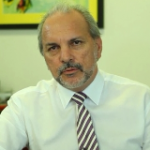 Excuse me, but this is a bit like 3 high street bankers sitting around discussing the plight of the homeless. Very few of these self-appointed experts have ever started a business let alone been directly responsible for innovation in the marketplace.
Excuse me, but this is a bit like 3 high street bankers sitting around discussing the plight of the homeless. Very few of these self-appointed experts have ever started a business let alone been directly responsible for innovation in the marketplace.
After being in the computer software business for over 3 decades I have been directly involved in the most innovative period mankind has seen. From the introduction of “mini” computers to the “cloud” to IoT (the Internet of Things), technical change has been a staple of the industry. But from text files to relational databases to big data, the evolution of information as a tool has been the backbone of innovation in the aptly named “information revolution”.
What is Innovation?
Let me start with what it isn’t. Innovation is not invention. Innovation is the application of invention as a solution to a practical need. Before the Model T Ford was Oldsmobile, before the iPhone there was the Blackberry, before Facebook there was MySpace, and before the internet was X25. Apple’s “invention” of the personal computer made little headway outside academia until Microsoft’s second rate operating system launched IBM compatible PCs that changed the world.
Serendipity is the mother of invention
By far the greatest source of innovation would have to be serendipity, where accidents during research have been recognised for other practical applications. From gunpowder (as an elixir) to x-rays (named x as in unknown), Teflon, pacemakers, and anaesthesia, the list goes on and on. But probably Alexander Fleming’s discovery of penicillin in 1928 was the greatest serendipitous invention. Returning from a holiday, Fleming noticed a Petri dish containing Staphylococcus that had been mistakenly left open was contaminated by blue-green mould, from an open window, that had stopped the growth of the bacteria. Fleming thought it could make a good disinfectant.
Innovation is a Vision
But again, the innovation of penicillin as we know it today didn’t occur until the 1940’s when an Australian pathologist Howard Florey successfully used it as a medical treatment for infections.
Innovation is driven by someone with a new vision of how THEIR world could be and the drive to come up a solution. Essentially, this means it must come from operational personnel. Science is as essential to innovation as fuel is to a motorcar but it does not drive it. The worst part of the current government approach getting it backwards, is that they are pushing changes to the R&D Tax Incentive that will move it away from supporting Start-ups (business innovators) to just another form of academic research grants. I don’t blame academics pursuing self-interest but this will have the opposite effect to the governments intended goal. And FastTrack has no claims for the R&D Tax Incentive, so there is no personal motive.
Further it will stifle pure academic research (the search for what is possible), and reduce the pursuit of serendipitous discoveries as scientists are forced to focus on specified outcomes.
Lack of Vision in current approach
Business has always been dogged by a lack of strategic thinking: the “just do it” mentality. The Government Chief Scientist’s comments that Phd graduates aren’t entrepreneurial enough is indicative of the lack of understanding of what it takes to be innovative. I suggest he (also Greg Hunt @GregHuntMP and Malcom Turnbull) could benefit for reading “Thinking, Fast and Slow” by Daniel Kahneman, to comprehend the difference between analytical (research) and creative (application) thinking.
Google on Innovation
Instead of idiotic comparisons to the Icelandic football team (yes that’s his vision for science research), and chiding business to “do better” (that helps), I suggest Google’s mantra on innovation represents a far better roadmap for achieving an innovative culture:
- Innovation comes from anywhere
- Focus on the user.
- Aim to be ten times better
- Bet on technical insights
- Ship and iterate
- Give employees 20 percent time
- Default to open processes
- Fail well
- Have a mission that matters
And its 9, “Having a mission that matters”, Google’s Chief social evangelist Gopi Kallayil considers “the most important principle. Everyone at Google has a strong sense of mission and purpose. We believe the work we do has impact on millions of people in a positive way.”
To reiterate, the use of science and mathematics (my background) is intrinsic to developing solutions (see PDCA is NOT Best Practice) but it is creative vision that produces innovation and an innovative culture.
Bio:
Greg Carroll - Founder & Technical Director, Fast Track Australia Pty Ltd. Greg Carroll has 30 years’ experience addressing risk management systems in life-and-death environments like the Australian Department of Defence and the Victorian Infectious Diseases Laboratories among others. He has also worked for decades with top tier multinationals like Motorola, Fosters and Serco.
In 1981 he founded Fast Track (www.fasttrack365.com) which specialises in regulatory compliance and enterprise risk management for medium and large organisations. The company deploys enterprise-wide solutions for Quality, Risk, Environmental, OHS, Supplier, and Innovation Management.
Mastering 21st Century Risk Management” which will be available from the www.fasttrack365.com website in a couple of weeks. Meanwhile a recent Webinar on the topic can be seen at http://www.youtube.com/watch?v=nQoJj6FBxrY&feature=youtu.be in which we show how emerging best practices provide a good picture for how enterprise risk management should look in the 21st century.